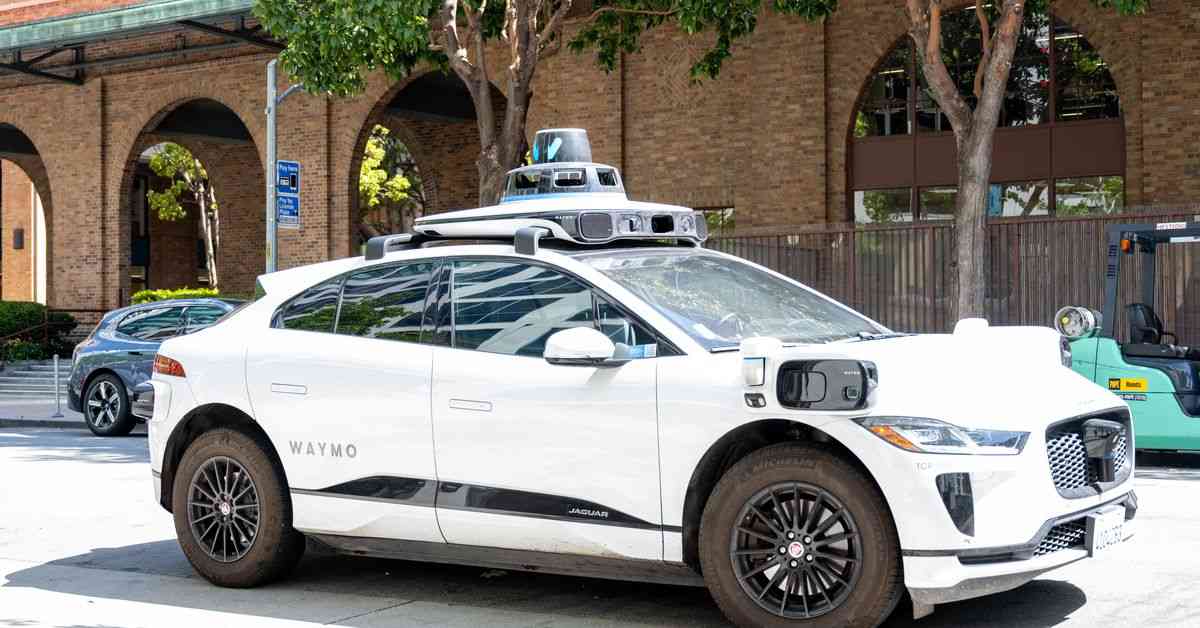Inside the Nightly Waymo Robotaxi Parking Lot Honkfest in San Francisco
Have you ever wondered what happens to self-driving taxis when the world is asleep? Thanks to software engineer Sophia Tung, one YouTube channel has been livestreaming a San Francisco parking lot that Waymo is renting to give its robotaxis a place to go during their downtime. Tung shared with The Verge via email that Waymo appeared to have taken over the lot partially on July 28th before eventually occupying the entire space. This move came after Waymo opened up its robotaxi service to the public in San Francisco.
Tung’s livestream features a view of the parking lot complete with LoFi study beats in the background. She shared that she set up the livestream using a mini PC and a webcam encased in a cereal box to reduce glare. The stream allows viewers to tune in at any time of day to observe the activities of the Waymo cars. According to text overlaid on the video, the cars typically start returning to the lot between 7 PM and 9 PM PST from Sunday to Thursday, and between 11 PM and midnight on Fridays and Saturdays.
Currently, the parking lot appears calm with only three cars parked in it. However, the scene drastically changes when the lot starts to fill up around 4 AM, initiating what seems like a chaotic dance of autonomous parking accompanied by honking. Tung mentioned that the honking can last up to an hour before subsiding. Waymo representative Chris Bonelli acknowledged that the company is aware of the honking issue and is actively working on a solution to resolve it.
Tung, who describes herself as a micromobility advocate, shared her perspective on the situation, stating that she believes most people find the presence of the Waymo cars amusing. She expressed her enjoyment of watching the cars come and go but emphasized the need to address the ongoing honking disturbances. With the honking concern being the primary focus, it raises questions about the impact of autonomous vehicles on urban noise pollution and community well-being.
The Impact of Nightly Robotaxi Activities on San Francisco Residents
The nightly Waymo Robotaxi parking lot honkfest in San Francisco has garnered attention not only from curious onlookers but also from local residents who are directly impacted by the disruptive noise levels. While some individuals may find amusement in observing the autonomous vehicles navigating the parking lot, others are faced with the challenge of dealing with the honking that accompanies the nightly activities.
The honking issue raises concerns about the potential impact on the quality of life for San Francisco residents living in proximity to the parking lot. Studies have shown that excessive noise levels can have detrimental effects on physical and mental health, leading to increased stress, sleep disturbances, and overall decreased well-being. As Waymo works to address the honking behavior of its vehicles, it is essential to consider the implications of autonomous technology on urban environments and the communities that inhabit them.
In addition to the noise pollution concerns, the presence of Waymo robotaxis in the parking lot raises questions about the integration of autonomous vehicles into urban landscapes. As more companies like Waymo expand their autonomous services, it becomes crucial to evaluate the impact of these vehicles on existing infrastructure, traffic patterns, and overall city dynamics. The ongoing honkfest in the San Francisco parking lot serves as a microcosm of the larger conversation surrounding the role of self-driving vehicles in shaping the future of transportation.
Towards a Sustainable Solution for Nightly Robotaxi Activities
As Waymo continues to refine its robotaxi service and address the honking issue in the San Francisco parking lot, it is essential to consider sustainable solutions that prioritize the well-being of both residents and autonomous vehicle users. Collaborative efforts between technology companies, city officials, and community members are necessary to ensure that autonomous vehicles integrate seamlessly into urban environments without causing undue disruptions.
One potential solution to mitigate the honking problem could involve implementing advanced AI algorithms that enable the vehicles to navigate parking lots quietly and efficiently. By optimizing the behavior of the autonomous cars during parking maneuvers, Waymo could minimize noise disturbances while maintaining operational effectiveness. Additionally, community engagement initiatives could provide residents with a platform to voice their concerns and suggestions regarding the presence of autonomous vehicles in their neighborhoods.
Furthermore, exploring alternative parking locations for the Waymo robotaxis during their downtime could alleviate the pressure on the San Francisco parking lot and reduce the impact on nearby residents. By dispersing the vehicles across multiple designated parking areas, Waymo could distribute the honking activity more evenly, minimizing the concentration of noise in a single location. This approach could foster a more harmonious coexistence between autonomous vehicles and the surrounding community.
In conclusion, the nightly Waymo Robotaxi parking lot honkfest in San Francisco highlights the complex interplay between autonomous technology, urban environments, and community well-being. As Waymo addresses the honking behavior of its vehicles and strives to improve the overall user experience, it is crucial to prioritize the needs and concerns of residents who are directly affected by the presence of autonomous vehicles in their neighborhoods. By embracing sustainable solutions and fostering open dialogue between stakeholders, we can pave the way for a future where autonomous vehicles coexist harmoniously with urban communities.






















